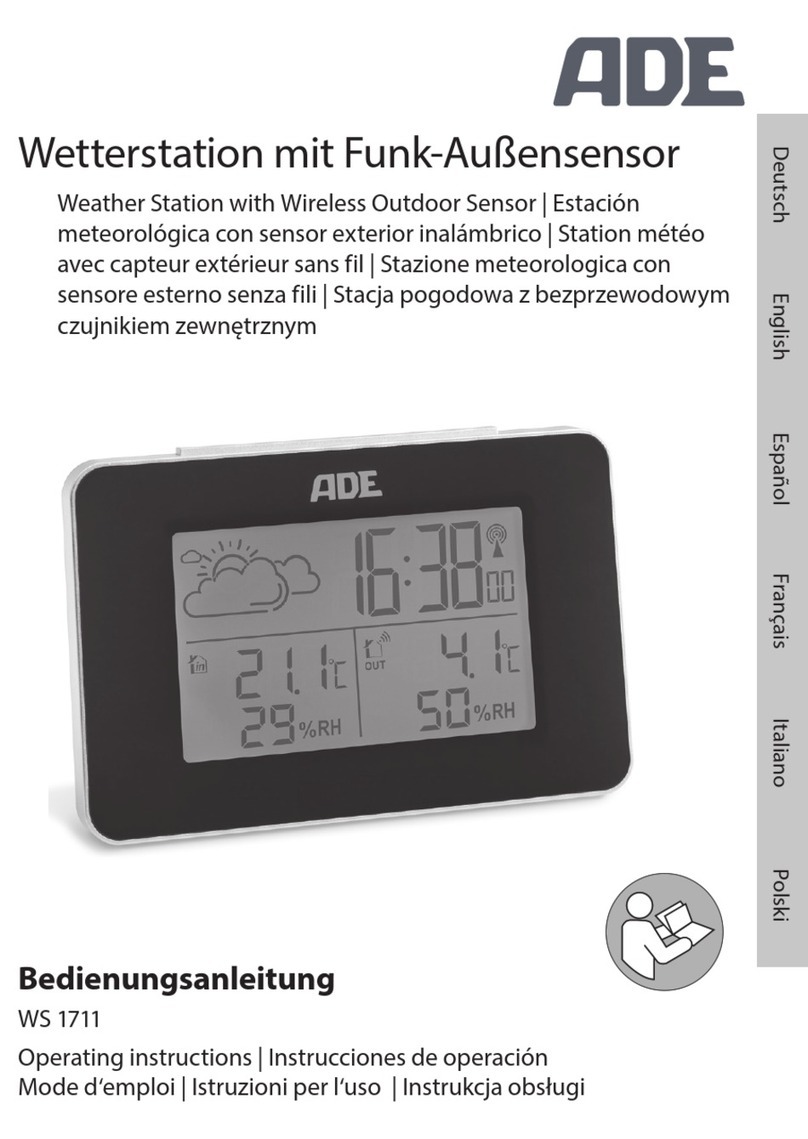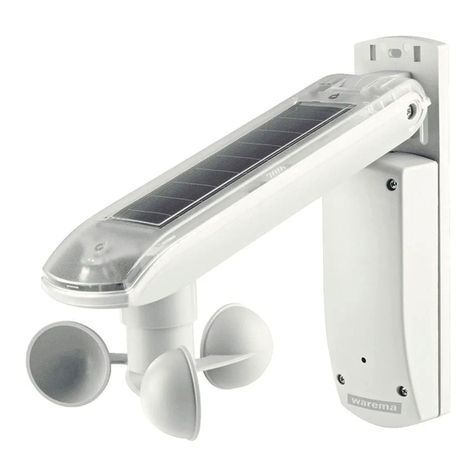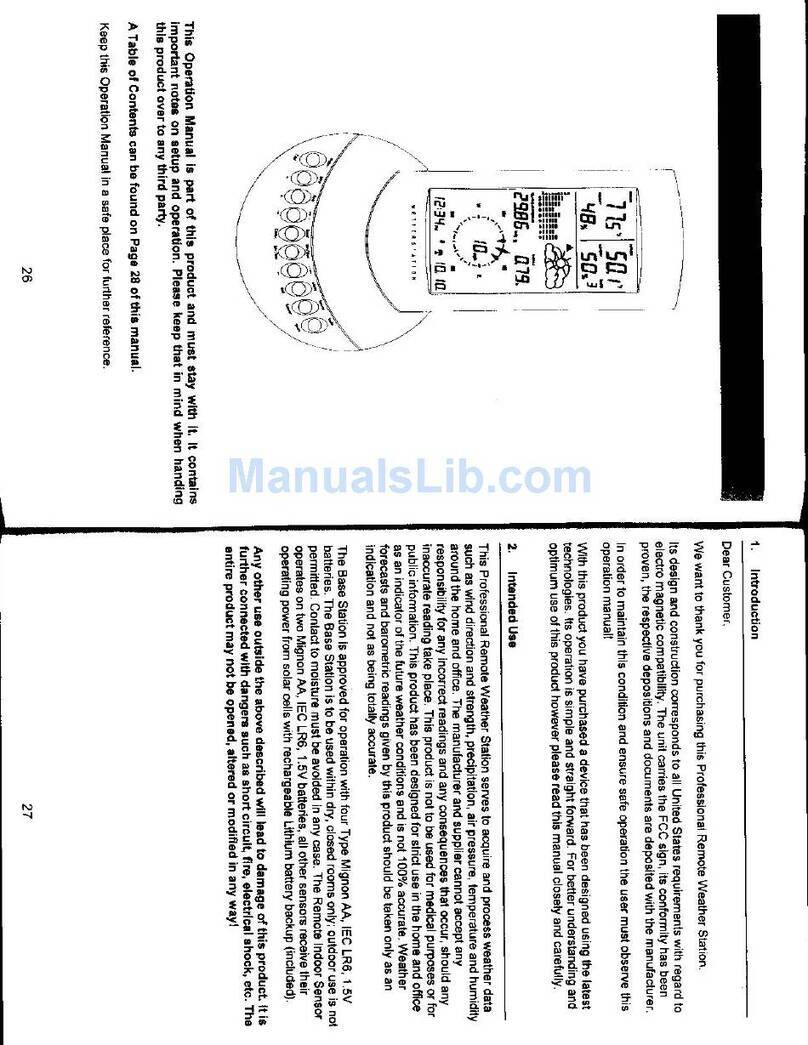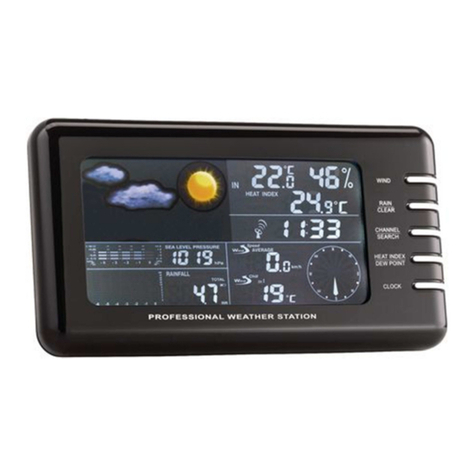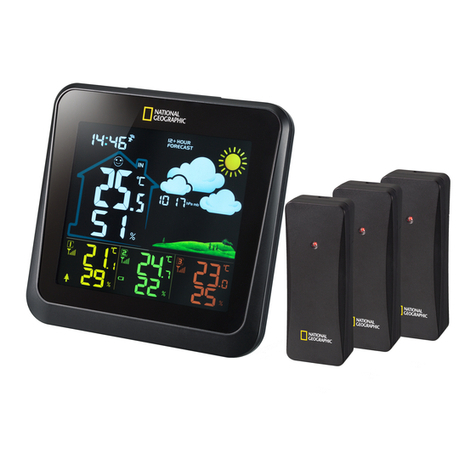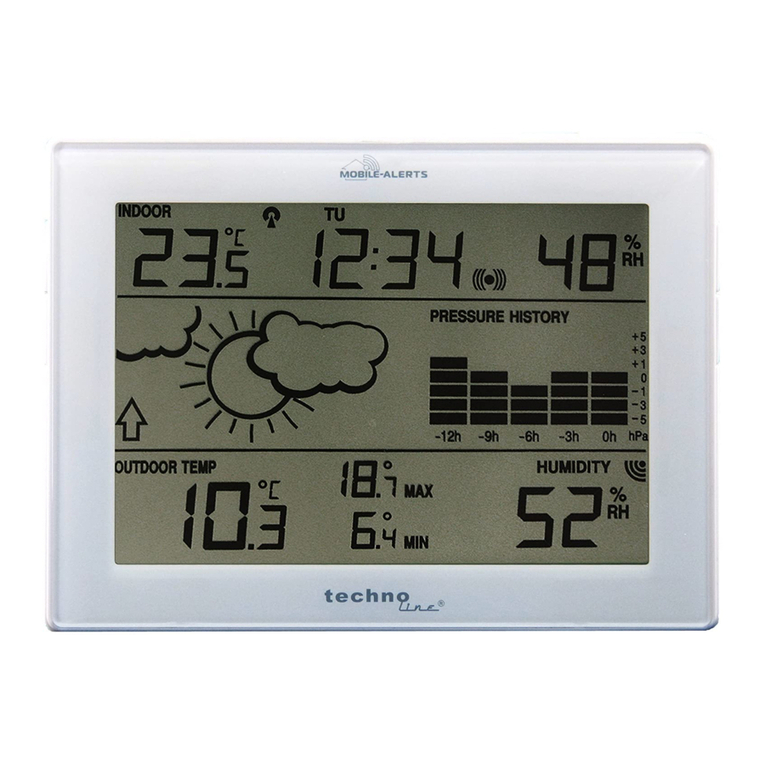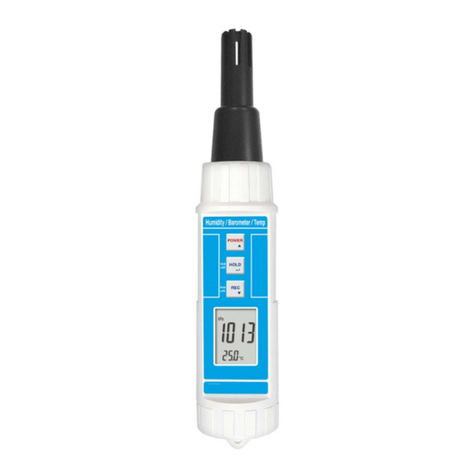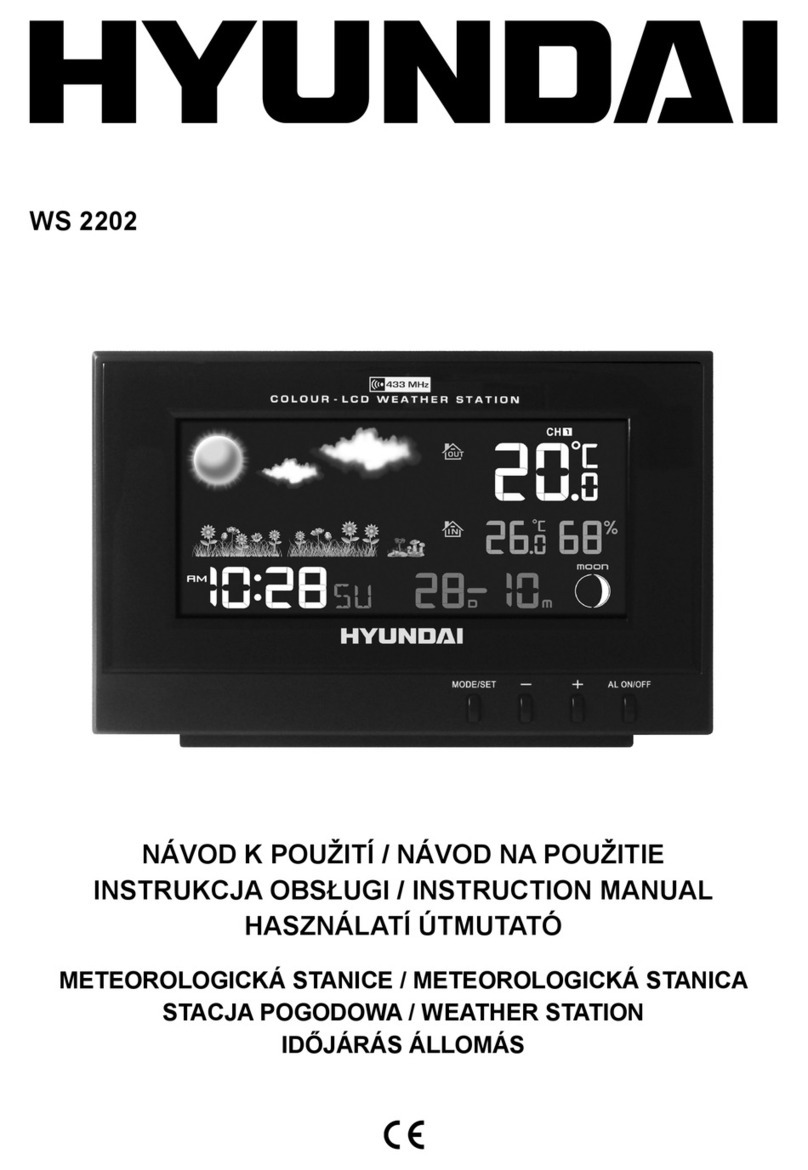- 9 -
The standard sea-level pressure is 29.92 in Hg (1013 mb). This is the average
sea-level pressure around the world. Relative pressure measurements greater than
29.92 inHg (1013 mb) are considered high pressure and relative pressure
measurements less than 29.92 inHg are considered low pressure.
To determine the relative pressure for your location, locate an official reporting station
near you (the internet is the best source for real time barometer conditions, such as
Weather.com or Wunderground.com), and set your weather station to match the
official reporting station.
To change the relative pressure is flashing, press the +key or MIN/MAX key to
increase or decrease the relative pressure setting to match the official reporting
station.
5.3 Alarm Modes
- While in Normal Mode press the ALARM key to enter the High Alarm Mode
- Press the ALARM key again to enter LowAlarm mode
Remark: after the initial pressing of ALARM key, the display will be refreshed to
show current high, low alarm value. Normal alarm value will be displayed only for
those already activated, all other not activated values will be displayed with
“---“or”--“instead.
- Press the ALARM key again to return the Normal Mode
- In the High Alarm Mode press the SET key to select the following alarm modes:
1. Time alarm (hour/minute)
2. Indoor humidity high alarm
3. Indoor temperature high alarm
4. Outdoor humidity high alarm
5. Outdoor temperature and dew point high alarm
6. Pressure high alarm
- In the Low Alarm Mode press the SET key to select the following alarm modes:
1. Time alarm (hour/minute)
2. Indoor humidity low alarm
3. Indoor temperature low alarm
4. Outdoor humidity low alarm
5. Outdoor temperature and dew point low alarm
6. Pressure low alarm
- In the alarm modes, Press +key or MIN/MAX key change or scrolls the alarm
value. Hold the +key or MIN/MAX key for 3 second to change the number in great
step. Press the ALARM key to choose the alarm on or off (if alarm is enabled, the
speaker icon on the LCD will be turned on indicating the alarm function has been
enabled). Press the SET key to confirm the setting and continue pressing the SET
key to toggle through each alarm mode until it returns to the normal display mode.
- Press SNOOZE/LIGHT key or key idle 10 second at any time, the alarm mode will
return to Normal Mode
